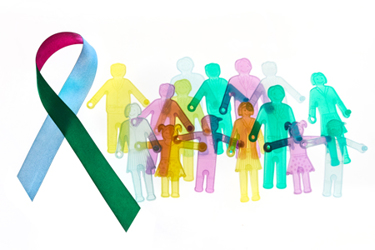Rare Disease Day, 2/28/22

By Erin Harris, Editor-In-Chief, Cell & Gene
Follow Me On Twitter @ErinHarris_1

Every year, Rare Disease Day takes place worldwide, typically on or near the last day of February. This year, Rare Disease Day is on Monday, February 28th. Currently, there are more than 7,000 rare diseases that affect more than 300 million families worldwide. Approved drugs are available for just 5% of the rare diseases identified so far, many of which are life-threatening or life-limiting. As such, one of the goals of Rare Disease Day is to raise awareness among policymakers and the public about rare diseases and their impact on patients’ lives. Several organizations spend all year focused on treatments and potential cures for rare diseases. For example, according to the National Institutes of Health (NIH), Rare Disease Day demonstrates NIH’s commitment to helping people with rare diseases through research; highlight NIH-supported rare diseases research and the development of diagnostics and treatments; initiate a mutually beneficial dialogue among the rare diseases community; exchange the latest rare diseases information with stakeholders to advance research and therapeutic efforts; and last but certainly not least, shine a spotlight on stories told by people living with a rare disease, their families, and their communities. The National Organization for Rare Disorders (NORD) works with its sister organization EURORDIS (Rare Diseases – Europe) and others globally to drive an international campaign that shines a light on rare diseases and advocates for health equity for all those living with a rare disease.
At Cell & Gene, we do our part to emphasize and highlight Rare Disease Day not only on the actual date but also all year long by publishing editorial that covers the biotechs and companies that are developing life-saving therapies to combat rare diseases such as congenital adrenal hyperplasia (CAH). Indeed, I had the chance to talk to BridgeBio’s Dr. Eric David on Cell & Gene: The Podcast about the company’s gene therapy programs targeted at rare diseases. And, as Orchard Therapeutics’ CEO Dr. Bobby Gaspar explains, Orchard and others are advancing HSC gene therapy for a series of different conditions. Driving this continued growth are, what Gaspar considers, the hematopoietic stem cells (HSCs) gene therapy approach’s two main distinguishing potential benefits: a durable and potentially curative effect and the ability to deliver genes to the CNS through the natural ability of HSCs to cross the blood-brain barrier.
As more and more new therapies for rare diseases come to market, manufacturers, providers, and payers are all trying to do right for the patient and their own respective businesses. However, according to an article written by Guidehouse, “everybody” comprises different stakeholders coming from different angles: payers from coverage, specialty pharmacies and distributors from access, providers from care, etc. It is often up to the manufacturer to ensure the entire experience is orchestrated to make it as easy as possible for the patient to access and use these therapies, and as efficient and effective to help them do so for all involved.
The Role of Patient Engagement and Advocacy
Drug discovery and manufacture are critical components of the rare disease space. The therapies are almost nothing without patient engagement and advocacy groups working directly with families to understand the patients’ needs. SpringWorks Therapeutics explains that the role of the patient advocate in rare diseases extends beyond execution of clinical trials and into the regulatory approval process. Over the last few decades, regulatory agencies have increasingly included patient advocates in regulatory review committees, such as the FDA Patient Representation Program, a flagship program that offers patients and caregivers the opportunity to provide critical advice to the agency as it regulates medical products — drugs, biologics, and devices. Collaboration with patient advocacy groups early in the development process will help build relationships required to support potential regulatory reviews.
Involvement in Rare Disease Day All Year Long
With Rare Disease Day right around the corner, there are countless ways biotechs and the biopharma industry at large can make real change toward lifesaving, curative therapies. Novartis Gene Therapies’ Amy Nicole Nayar, PharmD, MS HEOR, explains in her article that patient communities are collecting real-world data to support regulatory decision making and inform access decisions through consortia, such as RaDar, RareX, CoRDS, IAMRARE, PEER, and All of Us. She states that by harnessing the power of this data, the industry hopes to improve the chances of successful approvals and access to transformative treatments in the future. Speaking of engagement with patient organizations, for rare disease clinical trials, Rezolute’s Dr. Davelyn Eaves Hood explained that some rare disease organizations may only have a handful of staff attempting to accomplish big agendas, which can compete with the desired timelines of drug development. From assigning a dedicated point of contact to collaborating and provide needed resources to patients to treating each advocacy organization like the unique community it is, she offers tips for recruiting for and enrolling patient-focused rare pediatric disease studies.
According to AVROBIO’s Fernanda Copeland, for patient advocacy to be successful, patient advocacy teams need to understand the setting of the specific patient in their specific geography. When it comes to support for clinical trial in the era of digital media, Copeland states that AVROBIO has been able to successfully connect the world in the right language, to the right cultural needs, to navigate each patient’s individual needs.
How is your company or team celebrating Rare Disease Day? Let us know what you’re doing to bring life-saving therapies for rare diseases to market.
